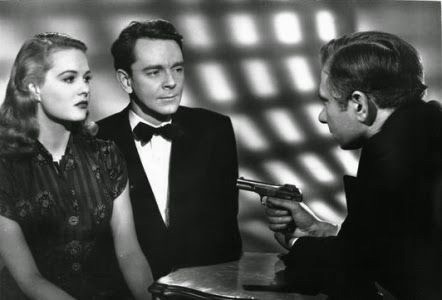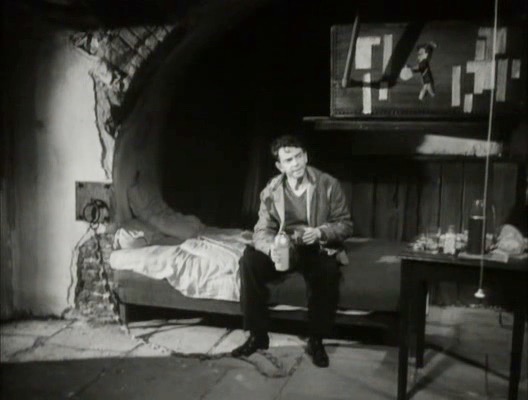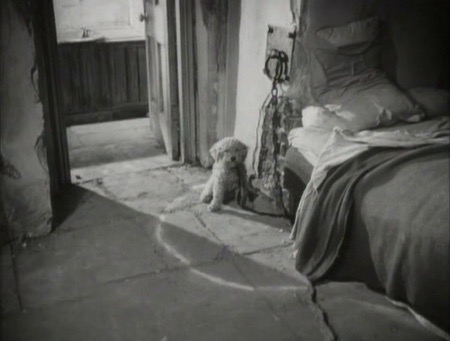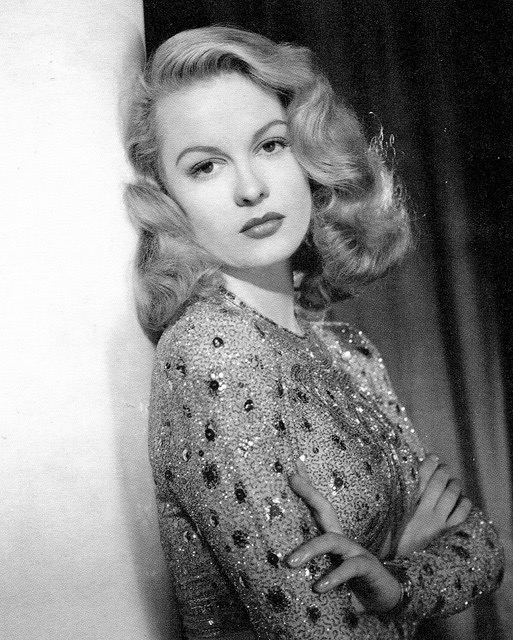Is there really such a thing as “The Perfect Crime”? In theory the plot might seem infallible but what about the unforeseen surprise that could wreck the whole thing? It could be the benign interference of a neighbor or a stranger or even an accidental mishap involving the architect of the crime. An excellent example of what could go terribly wrong at the last minute can be found in The Hidden Room (aka Obsession, 1949) directed by Edward Dmytryk.

Synopsis: London psychiatrist Dr. Clive Riordan (Robert Newton) could use a shrink of his own. Despite his professional manner and calm façade, he is seething with murderous rage over his wife’s constant infidelities and her latest dalliance with Bill Kronin (Phil Brown), an American on business in England, proves to be the final straw. Methodically and obsessively, Riordan begins to plot his revenge on his wife Storm (Sally Gray) and her lover and his diabolical plan involves a secret underground chamber in a deserted bombed-out neighborhood and a bathtub full of acid, strong enough to completely dissolve a human corpse.

Not as well known as Edward Dmytryk’s groundbreaking film noirs of the forties, Murder, My Sweet (1944) and Crossfire (1947), The Hidden Room is nonetheless a gripping psychological thriller that builds considerable menace and tension in its bleak trajectory of events. On a visual level, the film (photographed by C.M. Pennington-Richards) is pure noir but in terms of execution, The Hidden Room compares favorably to such better known portraits of aberrant behavior depicted in Hitchcock’s Strangers on a Train (1951) and Dial M for Murder (1954). Like Robert Walker’s Bruno Antony or Ray Milland’s Tony Wendice in the latter films, Dr. Riordan is the sort of cunning psychopath who has worked out the perfect murder down to the last detail but has overlooked the possibility of any flaw in the grand design. And in this case, the best laid plans hinge on the fate of a missing dog named Monty.
One possible reason that The Hidden Room has been overlooked and underrated for so long is because so few people have actually seen it except in poor quality, gray market dupes over the years. The film was made in England on a low budget by Dmytryk after he had been uncooperative before the House Un-American Activities and was blacklisted in the Hollywood community along with other members of the infamous “Hollywood Ten” that included screenwriter Dalton Trumbo. The fact that Dmytryk was branded as a communist and politically subversive by the press certainly hurt his career and reputation and it’s little wonder that The Hidden Room was poorly distributed and ignored by audiences in the U.S. Yet, those who seek out the film are rewarded with a taut yet darkly humorous character study of a marriage made in hell and its consequences.

The cast is uniformly excellent with Robert Newton giving a surprisingly intense yet restrained performance (by his usual scenery-chewing standards) as the insanely jealous Riordan. The alluring and stylish Sally Gray is perfectly cast as Riordan’s spoiled and faithless wife, the sort of pampered woman whose serial affairs are no more than enjoyable diversions like shopping sprees. And Phil Brown as Riordan’s unfortunate victim is the sort of wise-guy philanderer who almost deserves his fate but is just sympathetic enough to make you care about him in the movie’s darkest hour.

Adding a bit of droll humor to the proceedings is Naunton Wayne as Supt. Finsbury of Scotland Yard whose deceptively cheerful behavior while investigating Riordan hides a steel-trap mind. To top it off, there is a subtle but brooding score by Italian composer Nino Rota, who would soon begin collaborating with Federico Fellini, starting with The White Sheik (1952).
Based on the stage play A Man About a Dog by Alec Coppel (who adapted the screenplay), The Hidden Room was shot over a thirty day period which presented some challenges to Dmytryk such as finding a trained dog to play Monty, the pet terrier of Storm Riordan. In the end, the featured canine had to be trained prior to filming and was insured for a substantial sum in case he ran away. More unpredictable was Robert Newton whose reputation as a troublesome alcoholic preceded him. In his autobiography, Dmytryk wrote, “One of the nicest, most considerate, most sensitive of men when sober, he was a holy terror when drunk, though sometimes amusing….He had to post a 20,000 [pound] bond guaranteeing his sobriety during production. If we had been a few days over schedule, I doubt he would have made it. As it was, on the last day of shooting, with liberty in sight, he started drinking ale at lunch. By the time I had said “print it” on his last scene, his face was glowing a deep red. By the time our set party was over, he was already Mr. Hyde.”

As for Monty, the runaway scene stealer of The Hidden Room, Dmytryk noted that, “A few weeks after completion of filming, he apparently disappeared from the producer’s apartment. The insurance company offered a reward. Someone found him at the other end of Hyde Park and returned him to a somewhat reluctant owner. A couple of weeks later, the ungrateful pup ran off again. Once more a sizable reward resulted in recovery. Sometime later, he ate some poisoned meat. No reward could save his life. Moral – too much insurance is not good protection.”
Among the few reviews The Hidden Room received at the time of its release, most were positive such as this Variety review that said “Powerful suspense is the keynote of Edward Dmytryk’s first British directorial effort” and singled out a supporting player: “Naunton Wayne as the Yard superintendent is an example of perfect casting and his nonchalant manner deserves particular praise.”

A more recent reassessment of the film by Barry Gifford, author of Wild at Heart: The Story of Sailor and Lula which became the basis of the 1990 David Lynch film, called The Hidden Room “a corker,” adding “This is a great film of a rational mind at work, enjoying the anticipation, watching his rival suffer, and there’s a good predictable trick ending. The real reason to watch this movie, however, is to see the lovely Sally Gray, a British actress who did not appear in many films (Dangerous Moonlight [1941] was a good one). Her seeming intelligence is part of her beauty; she has it all over any other celluloid blonde as far as I’m concerned.”

The Hidden Room is one of those films that has never received a proper home video release in a format that has done it justice. There have been gray market versions of the film available for years but this is a film that needs the rescue and attention of The Film Noir Foundation or some other restoration outfit. The problem may be that the elements for this British produced film are lost. In the meantime, you can try to stream it on the internet (the quality will be mediocre to poor) or purchase a DVD of it from bootleg operations like Telavista. You can also watch for it on Turner Classic Movies, which has aired it in the past.

Other links of interest:
https://spartacus-educational.com/USAdmytryk.htm
http://www.mooncove.com/newton/bio.htm
https://www.theguardian.com/news/2006/oct/05/guardianobituaries.obituaries1




